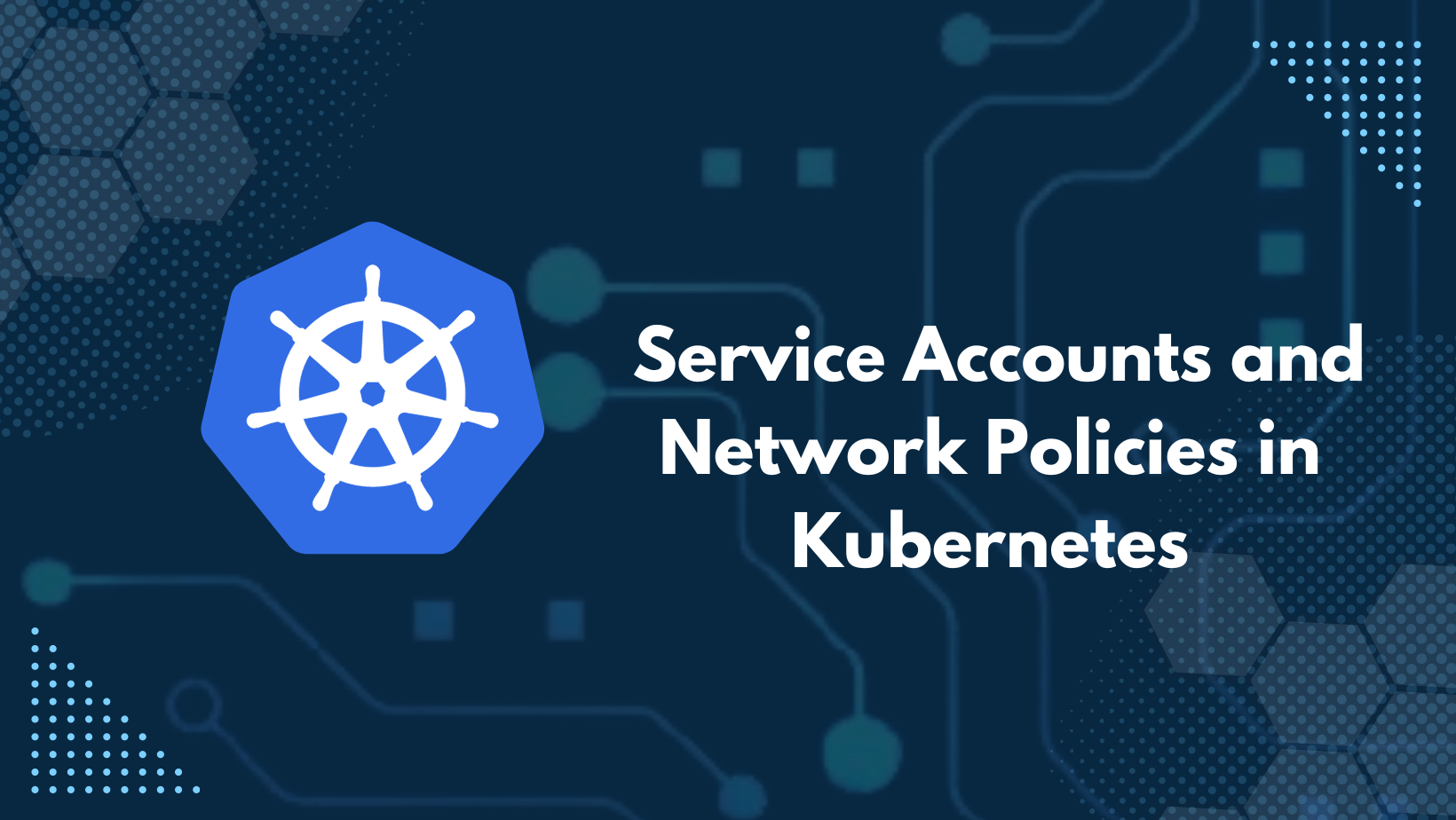Understanding Service Accounts and Network Policies in Kubernetes
 Ashutosh Mahajan
Ashutosh Mahajan
Kubernetes, a powerful container orchestration platform, offers various tools and features to manage applications effectively. Two crucial aspects of securing and managing your Kubernetes cluster are Service Accounts and Network Policies. This blog post will delve into what Service Accounts and Network Policies are, how to use them, and best practices for implementation.
🗼Service Accounts in Kubernetes
Service Accounts provide a mechanism for processes running in Pods to authenticate and interact with the Kubernetes API. By default, when a Pod is created, it is assigned the default Service Account in its namespace. However, you can create and use custom Service Accounts to fine-tune permissions and enhance security.
Creating and Adding a Service Account to a Pod
Create a Service Account: To create a new Service Account, use the following command:
kubectl create serviceaccount my-service-accountDefine the Pod Configuration: In your Pod configuration file (YAML), specify the Service Account you created:
apiVersion: v1 kind: Pod metadata: name: my-pod spec: serviceAccountName: my-service-account containers: - name: my-container image: my-imageDeploy the Pod: Apply the configuration to create the Pod with the specified Service Account:
kubectl apply -f my-pod.yaml
Modifying Service Accounts for Existing Pods
You cannot edit the Service Account of an existing Pod directly. If you need to change the Service Account, you must delete and re-create the Pod. Here are the steps:
Delete the Existing Pod:
kubectl delete pod my-podModify the Pod Configuration: Update the Pod configuration file with the desired Service Account.
Re-create the Pod: Apply the updated configuration:
kubectl apply -f my-pod.yaml
🗼Network Policies in Kubernetes
Network Policies are a critical security feature in Kubernetes that control the traffic flow between Pods. By default, all Pods in a cluster can communicate with each other, which may not be desirable in all scenarios. Network Policies enable you to specify which Pods can communicate with each other, effectively segmenting your network.
Use Cases for Network Policies
Imagine you have a front-end Pod and a back-end Pod. You want to restrict the front-end Pod from communicating with any Pod except the back-end Pod. This is where Network Policies come into play.
Creating a Network Policy
Label Your Pods: Ensure your Pods are labeled appropriately. For instance:
apiVersion: v1 kind: Pod metadata: name: backend labels: app: backend spec: containers: - name: backend image: backend-imageDefine the Network Policy: Create a Network Policy YAML file:
apiVersion: networking.k8s.io/v1 kind: NetworkPolicy metadata: name: allow-backend spec: podSelector: matchLabels: app: backend policyTypes: - Ingress ingress: - from: - podSelector: matchLabels: app: frontendApply the Network Policy: Deploy the Network Policy to your cluster:
kubectl apply -f network-policy.yaml
In the example above, only Pods with the label app: frontend can communicate with the Pod labeled app: backend.
Best Practices for Network Policies
Least Privilege: Start with a default deny-all policy and then allow necessary communications.
Granular Policies: Define Network Policies as granularly as possible to minimize the blast radius of any security breach.
Regular Audits: Regularly review and audit your Network Policies to ensure they meet your current security requirements.
🗼Conclusion
Service Accounts and Network Policies are vital components of Kubernetes security. By leveraging Service Accounts, you can manage permissions and access controls for your Pods. Network Policies, on the other hand, allow you to control traffic flow between Pods, enhancing the security of your cluster. Implement these tools effectively to ensure a secure and well-managed Kubernetes environment.
Subscribe to my newsletter
Read articles from Ashutosh Mahajan directly inside your inbox. Subscribe to the newsletter, and don't miss out.
Written by

Ashutosh Mahajan
Ashutosh Mahajan
Proficient in variety of DevOps technologies, including AWS, Linux, Shell Scripting, Python, Docker, Terraform, Jenkins and Computer Networking. They have strong ability to troubleshoot and resolve issues and are consistently motivated to expand their knowledge and skills through expantion of new technologies.